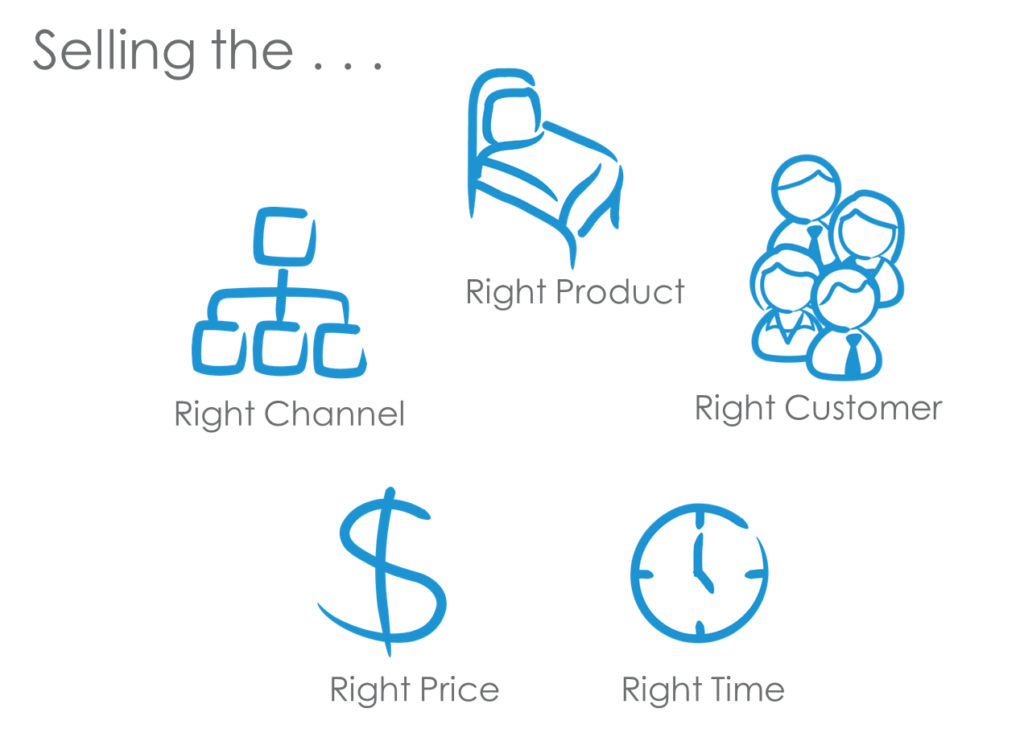Consulting Services answers recent client questions about hotel revenue management
Yuki Hu, IDeaS advisor in China, reveals the secret co-relationship between customer loyalty and revenue management. ![]()
Customer loyalty has always been a hot topic in hospitality, even though some marketing gurus suggest loyalty might be dying due to modern customers having too much choice via constant web connectivity. A study conducted by Facebook of 18,000 adult participants in the US examined loyalty through verticals across hotels, restaurants, car insurance, airlines and grocery. It found 77 percent of participants will return to the same brands again, among which 37 percent are true brand loyalists who would make repeat purchases with one company, mainly driven by two factors: trust and service.
KPIs include loyal customer percentage, loyalty program members, guest satisfaction survey results and net promoter scores—the most scientific and rigorous loyalty measurement of all. Although we often assume operation departments pay the closest attention to loyalty performance, we have received questions from our zealous revenue leaders wondering how loyalty benefits revenue performance and how revenue management can help.
How does loyalty affect revenue management?
Studies have shown that loyal customers tend to exhibit the behavior patterns listed below when patronizing their preferred hotels, resulting in more revenue compared against non-loyal customers:
- Loyal customers patronize more frequently.
- Loyal customers’ average pay per stay is higher. They may, for example, book premium room types, use hotel outlets and facilities more with increased food & beverage spend, and use laundry, spa and transportation services.
- Loyal customers are less price elastic. They tend to be less sensitive to changing prices, and don’t mind paying higher rates during peak seasons. They also prefer to book through direct channels even with the same price.
- Loyal customers bring in larger party sizes to the hotel, including friend or family groups for special events and even company meetings or annual parties if they are a business leader.
- When service failure happens, loyal customers tend to be more likely to forgive and forget rather than complain or ask for a free stay.
- Costs to maintain a loyal customer are much less compared with launching marketing campaigns to attract a new one.
- Last but not least, word of mouth is as powerful as ever, whether through public OTA channel comments or personal sharing among friends and acquaintances.
How can revenue management boost customer loyalty?
At IDeaS, we always use the “five rights” to define and describe revenue management, selling the right product, to the right customer, at the right time, with the right pricing, through the right channel. Now let’s take a closer look at how we can generate more customer loyalty from these five elements.
The Right Customer
Who are our customers? Anyone paying to stay or dine with us? Do we have the market segments carefully designed and selected? Do we know our clients’ personas and behavior? Which segment rates do loyal customers purchase most? Is it BAR? Or package? Or maybe corporate FIT? Do we have the right pricing or inventory control strategy to better meet their needs?
Customization has become more and more popular, yet, ironically, hotel offers are getting more standard and routine. Hoteliers need to think outside the box and put themselves in their clients’ shoes. Think of their booking and staying journey when they travel with their significant others, friends, families, children or colleagues.
The Facebook study found that “new parents are particularly more loyal in verticals that might not trigger as much loyalty in non-parents.” Their preference to stick to what they know replaced their desire to experiment with something new. How can we improve our communication approach with new parents and match them with the most appropriate product?
The Right Pricing
How can we better price for loyal clients? Is pricing per person the future? What about component pricing?
Many major brands and independent hotels have loyalty programs. Some are more value-focused with different benefits for different membership levels. Others simply focus on price, with different discounts applied to different membership types. Which is the better way to communicate with customers? Since loyalty is more likely to be stimulated by service and trust, instead of cheaper rates, it makes more sense to revisit the program from the angle of benefit over discount.
Theme-park hotels often struggle to build loyalty due to the infrequency of leisure travel bookings and a higher likelihood of price-driven over value-driven decisions. Despite this, it is still possible for these hotels to combine room sales with other perks like theme-park access, ticket bundles, restaurant offers and more. In this way, the hotel is not just offering a pricing structure but rather a framework that will guide clients on their entire stay or journey.
The Right Product
Our last Bridging the Industry post by Neil Corr suggested we start with personalization of products before we personalize pricing. Shall we take a break from struggling with too many promotions and carefully analyze which are the top sold amongst loyal customers and why? Do we have enough products? Again, could they be more personalized to make them more unique and irreplaceable?
Take a look at the hotel hardware and service. How do we perform against competitors, and what are our advantages? Trace the comments when service failure happens to see how to adjust the product or service better to prevent it from happening again.
Another way to improve customer loyalty is through a well-designed booker incentive program. The bookers themselves can be treated as our non-staying loyal customers who play an important role in the decision of which hotel to select over its competition.
The Right Channel
Channel strategy can also boost customer loyalty. Do you review your repeat customer or member data through the channel dimension? Rank your current channels in order from highest to lowest performance of loyal-customer percentage. Is it through walk-ins, the reservations department, call center, brand.com or OTAs?
Do you have a channel strategy for your findings? Do you apply rate parity across all channels? If your top channel is brand.com, with the highest percentage of repeat customers, but this channel’s production is only two percent of the total-hotel volume, what would you do differently to drive more demand though it?
Finally, once we have a chance to build positive bonding with our clients through flawless service and experience, where can the word of mouth spread? Do they post on TripAdvisor or Expedia? How can social media play a role? Keep in mind that the functions of channels are not simply to display hotel information and match products to client needs, but they also help promote, communicate, negotiate and create interactions that drive business and enable positive sharing and emotional bonding experiences, all highly effective ways to reach potential buyers.
The Right Timing
Timing is everything when it comes to revenue management and customer satisfaction, but hoteliers don’t always pay enough attention to this part. Take a deeper look at the customer’s entire booking and staying journey, from destination-city exploration, to shopping for hotels, to the final customer surveys or comments. Studies have shown that one of the key factors to stimulating loyalty is through “emotional bonding” between clients and hotels, which often happens through a “moment of truth.” How we put ourselves into the clients’ shoes to identify these moments and apply valid strategies is the main challenge.
One possible moment of truth occurs when a client books directly through the reservations department. A well-designed SOP or script to guide the reservations team throughout the booking journey from greeting to closure of the conversation is key. When questions are raised like “are you offering the cheapest rate over OTAs?” or “why is your rate higher than your competitor’s?” what’s your retention tactic? Maybe propose the client book now as the hotel is running full and suggest they can always make changes if they find a better deal elsewhere. Another moment of truth is during the client check-in process. Is there any potential upsell opportunity based on historical data of their previous stays?
Along with your time-related strategy, determine the best offer for loyal customers during low, shoulder, high seasons. During full-house nights, when the hotel is overbooked, how does the front office select the guests to walk? Should we avoid walking repeat customers? The answer is definitely “yes!” It’s better to choose those from third-party channels with shorter LOS or less likelihood of returning.
What about special seasonal promotions combined with more flexible pricing? Or maybe even tailor-made offers for those VIP clients during their special event, such as birthdays or anniversaries. These personal touches can greatly improve connections with the client through proper marketing promotions along with more revenue opportunities.
The topic of loyalty will always be hot, and hoteliers continue to explore every way possible to improve customer experience. This is not just a task for the operation team but also can be greatly geared up by revenue management.
Hey, don’t leave now—the fun is just beginning. Here are more industry insights making the rounds this week:
- How Digital Transformation Will Help You Win in GX: The sharp minds at Sabre have released a new report, providing a modern guest experience blueprint to help your brand begin its own digital transformation.
- Encouraging Guests to Leave Feedback – Are You Doing It Right?: Until mind-reading tech is available—imagine the regulatory headache—we still must request feedback and hope for a response. See how your methods measure up with TrustYou‘s recent post.
- How Blockchain Could Affect Hotel Distribution and Loyalty, Marriott Partners With Salesforce, and Why GMs Need Revenue Management: Get the latest scoop on these trending topics from SnapShot.
- Owning Your Hotel’s Online Real Estate: Curb appeal first impressions rarely take place in the real world anymore. How your brand and image come across online matters most. Bookassist talks tactics to own your web presence.
- Change Management Essentials for Revenue Leaders - August 20, 2019
- Bridging the Industry with Yuki Hu - November 7, 2018
- Bridging the Industry with Yuki Hu - August 29, 2018

